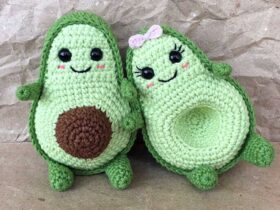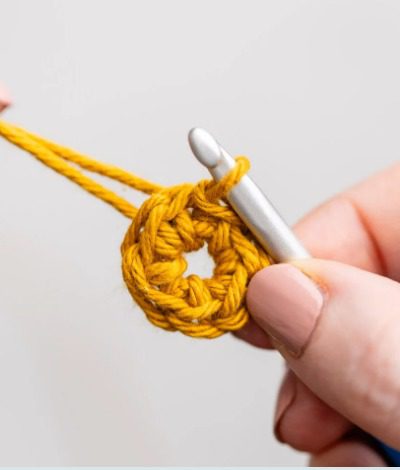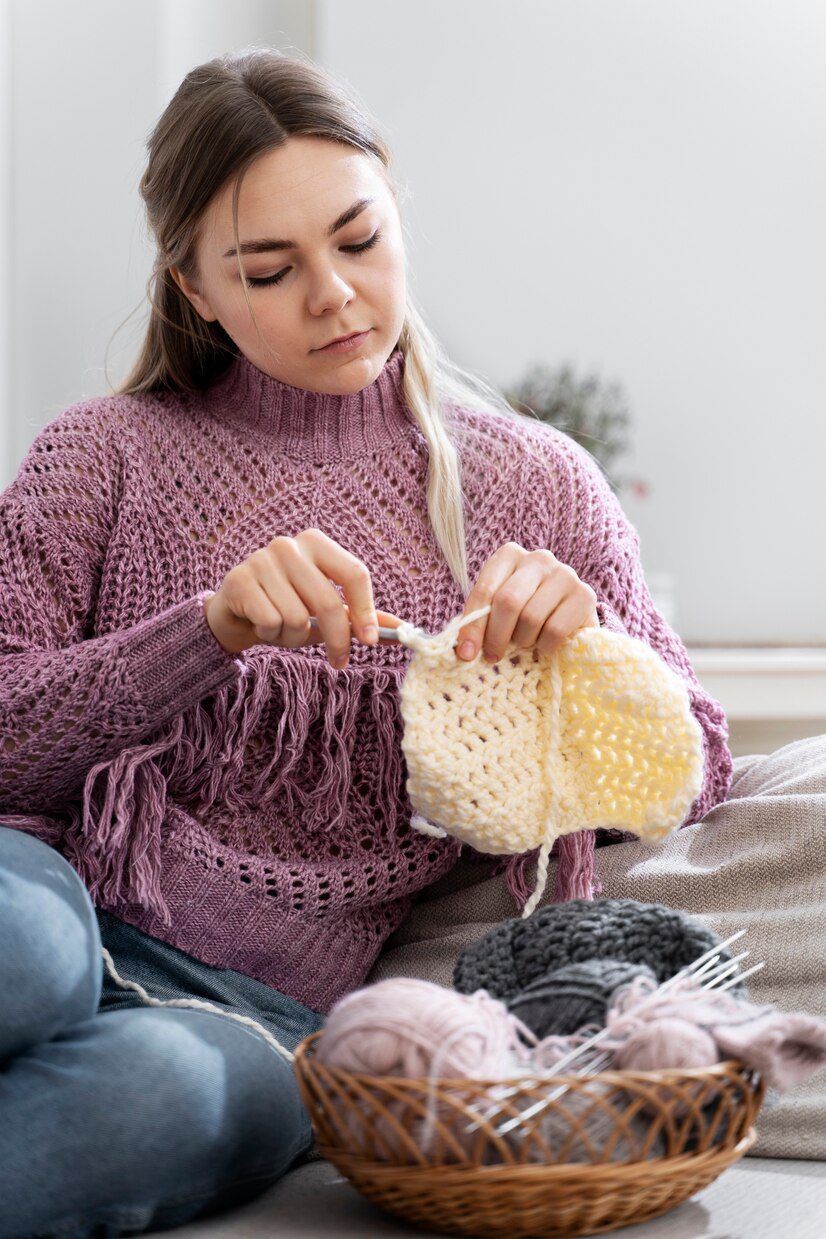The magic circle crochet technique is a game-changer for anyone who loves creating projects worked in the round. Whether you’re making amigurumi, granny squares, hats, or any circular crochet project, the magic circle (also called the magic ring or magic loop) creates a tightly closed center that eliminates the hole typically left by traditional starting methods. This comprehensive guide will walk you through mastering this essential technique with clear, step-by-step instructions that even beginners can follow.
Why the Magic Circle Crochet Method Makes a Difference
When you start a project using traditional chain methods, you often end up with a noticeable hole in the center of your work. The magic circle crochet technique solves this problem by creating an adjustable opening that you can pull completely closed after working your first round of stitches.
This technique is particularly valuable for:
- Amigurumi projects where stuffing would show through center holes
- Granny squares that need neat, tight centers
- Hats and beanies where you don’t want a hole at the crown
- Coasters and trivets that look more polished without center gaps
- Flower motifs that need a defined center
Once you master the magic circle crochet method, you’ll likely never go back to starting your circular projects any other way. The professional finish it provides simply can’t be matched by traditional starting chains.
Materials Needed for the Magic Circle Technique
Before we begin, gather these basic supplies:
- Yarn – Medium-weight yarn in a light color is ideal for learning
- Crochet hook – Size appropriate for your yarn (typically H/5mm for worsted weight)
- Scissors
- Stitch marker (optional but helpful)
The beauty of the magic circle crochet method is that it requires no special tools beyond your standard crochet supplies. The technique itself is what makes the difference.
Step-by-Step Magic Circle Crochet Tutorial
Step 1: Creating the Initial Loop
- Hold the yarn tail in your non-dominant hand (left hand for right-handed crocheters), letting it drape across your palm.
- Wrap the working yarn (the strand connected to your yarn ball) around your index and middle fingers, crossing it over to form an “X” shape, with the working yarn now behind your fingers.
- Pinch the intersection point with your thumb to secure it in place.
- Rotate your hand so your palm faces downward. Looking at the back of your hand, you should see two parallel strands of yarn—the left strand is your working yarn, and the right strand is the yarn tail.
Pro Tip: Keep the yarn tail at least 6 inches long to make it easier to work with and provide enough length for weaving in later.
Step 2: Catching the Loop with Your Hook
- Hold your crochet hook in your dominant hand and insert it from right to left under the right strand (the yarn tail side).
- Use your hook to catch the left strand (working yarn) and pull it under the right strand.
- Rotate your hook upward to create a loop on your hook.
Common Mistake: Don’t confuse this loop with a chain stitch—it’s simply securing the magic circle structure.
Step 3: Creating Your Foundation Chain
The number of chain stitches you make depends on what stitches you’ll be working in your first round:
- For single crochet (sc): Chain 1
- For half double crochet (hdc): Chain 2
- For double crochet (dc): Chain 3
Yarn over your hook and pull through the loop to create your chain stitch(es). At this point, the magic circle is secure enough that you can remove it from your fingers.
Step 4: Working Stitches into the Magic Circle
Now you’ll create your first round of stitches directly into the center of the magic circle:
- Insert your hook into the center of the ring—importantly, you’re working through the actual ring space, not into any chain stitches.
- Make sure you’re working around both strands that form the ring (the loop itself and the yarn tail).
- Complete your stitches as specified in your pattern. The most common starting count is 6 single crochets for amigurumi projects, but patterns vary.
- Continue until you’ve worked all stitches required for the first round.
Troubleshooting Tip: If your stitches seem to twist or you’re having trouble managing them, try pulling the yarn tail slightly to make the ring smaller and more manageable.
Step 5: Closing the Magic Circle
This is the crucial step that makes the magic circle technique so effective:
- Hold your completed stitches with your dominant hand.
- With your non-dominant hand, firmly pull the yarn tail to close the circle.
- Continue pulling until the hole in the center completely disappears.
- If your pattern calls for it, join the round with a slip stitch to the first stitch.
Important Note: The circle should close completely without leaving any gap. If you still see a hole, you may need to pull tighter or check that you worked around both strands properly.
Step 6: Securing Your Work
To ensure your magic circle doesn’t loosen over time:
- When weaving in ends at the completion of your project, work the yarn tail back and forth through the base of the first round stitches multiple times.
- Consider using a secure knot before weaving in the end if your project will receive heavy use or frequent washing.
Common Magic Circle Crochet Mistakes and Solutions
Problem: The Magic Circle Won’t Close Completely
Solution: Ensure you’re pulling the yarn tail, not the working yarn. Check that you created your stitches around both strands of the ring. For stubborn circles, try working with fewer stitches in the first round.
Problem: The Magic Circle Comes Undone Later
Solution: Always leave a long yarn tail (at least 6 inches) and weave it in thoroughly when finishing your project. For items that will be handled frequently, consider placing a small knot before weaving in the end.
Problem: Difficulty Creating the Initial Loop
Solution: Practice the hand positioning without the hook first. Once comfortable holding the yarn, introduce the hook. Some crocheters find it easier to wrap the yarn around just one finger instead of two.
Problem: Stitches Are Uneven or Twisted
Solution: Make sure you’re inserting your hook consistently into the center of the ring. Try marking your first stitch with a stitch marker to avoid confusion.
Magic Circle Variations for Different Situations
Double Magic Ring for Extra Security
For projects that require exceptional durability, try the double magic ring:
- Wrap the yarn around your fingers twice, creating three strands instead of two.
- Insert your hook under the first two strands.
- Catch the third strand and pull through.
- Continue as with the standard magic circle.
This variation provides additional security since there are more yarn wraps to hold the circle closed.
Alternative Method for Fuzzy or Slippery Yarns
Some yarns, particularly fuzzy, velvet, or very slippery varieties, can make the magic circle difficult to execute:
- Create the magic circle using a smooth cotton yarn in a similar color.
- Work your first round of stitches with your project yarn.
- Pull the cotton yarn tail to close the circle.
- Weave in both the cotton and project yarn ends.
This hybrid approach gives you the clean look of a magic circle with yarns that might otherwise be problematic.
Projects Perfect for the Magic Circle Crochet Technique
Once you’ve mastered the magic circle, try applying it to these projects:
Amigurumi
The magic circle is essential for amigurumi because it prevents stuffing from showing through. Use it to start heads, bodies, limbs, and other rounded components of your cute creatures.
Granny Squares
Whether classic or solid, granny squares benefit tremendously from the magic circle start. The technique creates a neat center point from which your square can grow evenly.
Top-Down Hats
When crocheting hats from the crown down, the magic circle creates a professional-looking top without the hole that traditional methods leave.
Circular Motifs
Flowers, mandalas, and other decorative circular motifs look much cleaner when started with a magic circle.
Seamless Home Décor
Items like coasters, potholders, and trivets benefit from the polished appearance that the magic circle provides.
Magic Circle vs. Chain Ring: When to Use Each
While the magic circle is versatile, there are situations where a traditional chain ring might be preferable:
Use Magic Circle When:
- You need a completely closed center
- Working with projects that require stuffing
- Creating items where appearance is paramount
- Making projects where strength at the center is important
Use Chain Ring When:
- Working with extremely fuzzy yarns that make magic circles difficult
- Creating projects where a small center hole is actually desired
- Following patterns that specifically call for chain rings
- You’re a beginner who needs more practice with the magic circle
The magic circle is generally superior in most situations, but having both techniques in your repertoire allows you to choose the best method for each project.
Advanced Tips for Magic Circle Mastery
Getting the Perfect Center
For an impeccably neat center:
- Maintain consistent tension in your first round of stitches
- Pull the yarn tail with steady, even pressure
- Adjust individual stitches as needed before moving to round two
Working with Color Changes
If your pattern requires changing colors after the magic circle:
- Complete your first round
- Close the magic circle tightly
- Join with a slip stitch if required
- Change colors using your preferred method
- Continue with round two in the new color
Counting Accurately
The foundation chain for your magic circle does not count as a stitch in your first round. For example, if your pattern calls for “6 sc in magic ring,” you’ll chain 1 and then work 6 sc into the ring.
Troubleshooting Magic Circle Issues by Yarn Type
Cotton Yarn
Cotton yarn has minimal stretch, which can make closing the magic circle challenging. Solution: Pull very firmly and consider using the double magic ring variation.
Fuzzy or Novelty Yarn
The texture of fuzzy yarns can make it difficult to see stitches and close the ring. Solution: Use the alternative method with cotton yarn for the initial magic circle.
Slippery Yarn
Yarns like bamboo, silk, or some acrylics can easily slide and loosen. Solution: Use extra-secure end weaving techniques and consider a small safety knot.
Super Bulky Yarn
Thick yarns can be unwieldy when creating a magic circle. Solution: Use a larger hook for forming the initial ring, then switch to your project hook for the stitches.
Why Weaving In Ends Is Crucial with Magic Circles
The magic circle’s greatest strength—its adjustability—is also its potential weakness. If the yarn tail isn’t properly secured, your entire project could unravel from the center out.
To prevent this disaster:
- Leave a longer tail than you think you need (at least 6 inches)
- Weave the tail through the base of the first round in multiple directions
- Thread through some stitches in the second round for extra security
- For frequently used items, consider adding a tiny drop of fabric glue to the woven end (optional)
Taking these extra steps ensures your magic circle remains magic for the life of your project.
Adapting Patterns to Use the Magic Circle
Many older crochet patterns use chain rings instead of magic circles. Here’s how to convert them:
- If the pattern starts with “ch 4, join with sl st to form a ring,” replace this with a magic circle.
- If the pattern says “ch 3, 11 dc in 3rd ch from hook,” make a magic circle, ch 3, and work 11 dc into the magic circle.
- Adjust your stitch count as needed—sometimes patterns account for chains as stitches.
Converting to magic circles almost always improves the finished appearance of your project.
Teaching the Magic Circle to Others
If you’re helping someone learn this technique:
- Break it down into very small steps
- Have them practice just forming the loop several times before adding stitches
- Remind them that it’s a technique that improves with practice
- Show examples of projects with and without magic circles to demonstrate the difference
Common Questions About Magic Circle Crochet
“Does the magic circle work for left-handed crocheters?”
Yes, simply mirror the instructions. Left-handed crocheters will wrap the yarn in the same way but insert the hook from left to right instead.
“My magic circle keeps coming undone as I work. What am I doing wrong?”
You might be pulling on the working yarn instead of the tail, or you may not have pulled the tail tight enough initially. Try holding the stitches slightly looser as you pull the tail.
“Can I use the magic circle for any crochet pattern worked in the round?”
Generally yes, though some patterns with very specific stitch requirements might need adjustment. The magic circle can almost always replace a chain ring start.
“How do I know if I’ve closed my magic circle tightly enough?”
There should be no visible hole in the center of your work. If you can still see through to the other side, it needs to be pulled tighter.
Conclusion
The magic circle crochet technique transforms circular projects from good to great with its professional, hole-free finish. While it may take a few attempts to master, the results are well worth the effort. This technique exemplifies the beauty of crochet—simple movements that create remarkable results.
Practice the magic circle until it becomes second nature, and you’ll find yourself reaching for it automatically whenever you start a project in the round. Your amigurumi, granny squares, hats, and other circular creations will thank you with their polished, professional appearance.
Remember that like any crochet skill, perfecting the magic circle takes practice. Be patient with yourself, keep trying, and soon you’ll wonder how you ever crocheted without this magical technique.













Leave a Reply